Neuroscience

Neurotransmitter receptors function via various G-protein coupled and G-protein independent mechanisms that activate downstream intracellular signaling pathways such as cAMP/PKA, PI3K/AKT, phospholipase A2, and phospholipase C pathways. For instance, dopamine receptors act through adenylate cyclase to activate PKA and other signaling molecules, thereby mediate gene expression through the actions of CREB and other transcription factors. Other neurotransmitters such as NMDAR or AMPAR are associated with ion channels that control flux of Ca2+ and Na+, thus propagating the action potential across the post-synaptic neuron.
Dysfunctions in GABAergic/glutamatergic/serotonergic/dopaminergic pathways result in a broad range of neurological disorders such as chronic pain, neurodegenerative diseases, and insomnia, as well as mental disorders including schizophrenia, bipolar disorder, depression, and addiction.
-
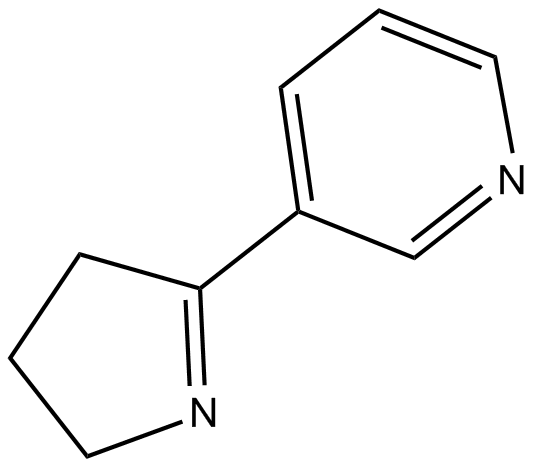 C5707 MyosmineSummary: agonist at neuronal nicotinic acetylcholine receptors
C5707 MyosmineSummary: agonist at neuronal nicotinic acetylcholine receptors -
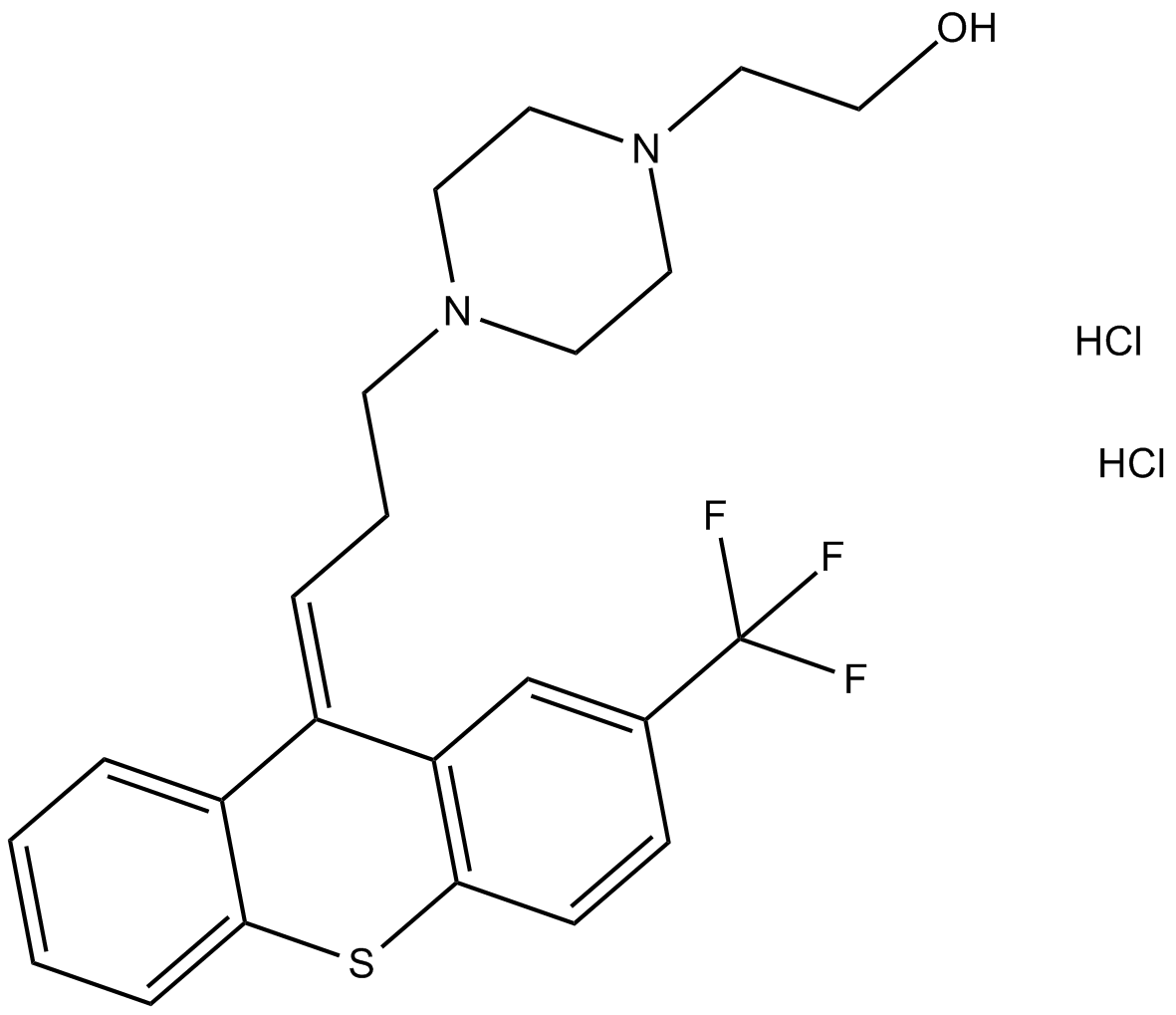 C5314 cis-Flupenthixol (hydrochloride)Summary: antagonist at dopamine D2 receptors
C5314 cis-Flupenthixol (hydrochloride)Summary: antagonist at dopamine D2 receptors -
 C5734 Trimipramine (maleate)Summary: potent antagonist of histamine H1 receptor
C5734 Trimipramine (maleate)Summary: potent antagonist of histamine H1 receptor -
 C5515 Eicosatetraynoic AcidSummary: nonspecific inhibitor of cyclooxygenases and lipoxygenases
C5515 Eicosatetraynoic AcidSummary: nonspecific inhibitor of cyclooxygenases and lipoxygenases -
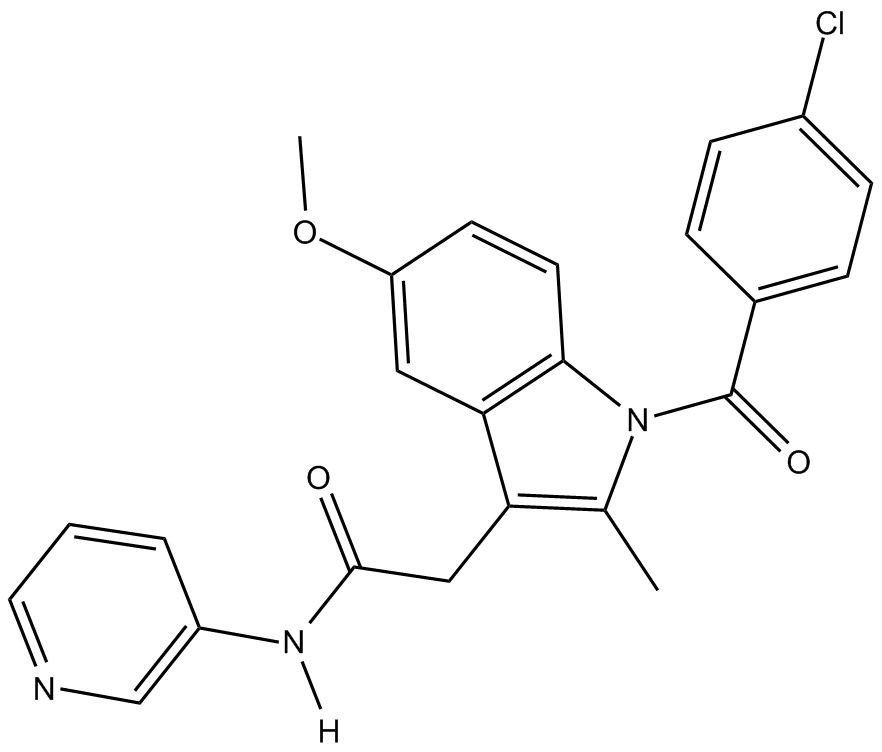 C5629 N-(3-pyridyl)-Indomethacin amideSummary: inhibitor of COX-2
C5629 N-(3-pyridyl)-Indomethacin amideSummary: inhibitor of COX-2 -
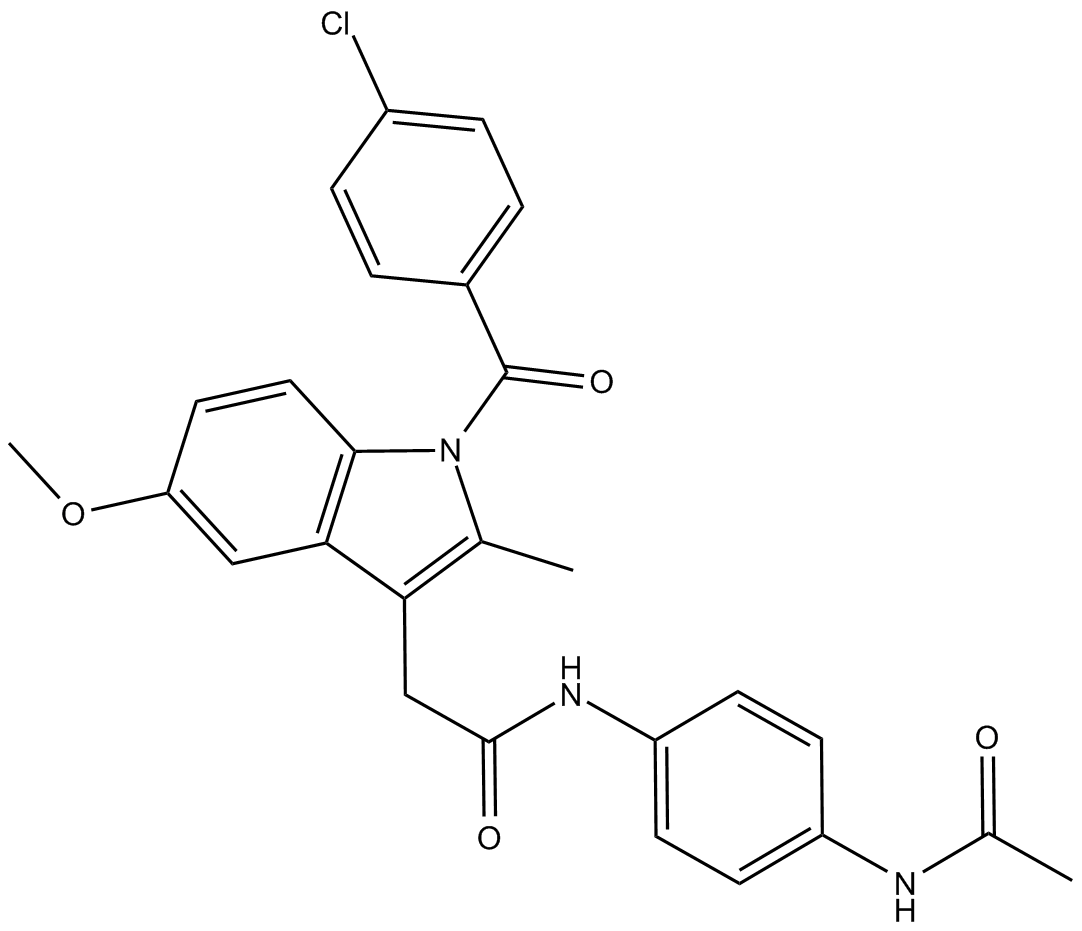 C5633 N-(4-acetamidophenyl)-Indomethacin amideSummary: inhibitor of COX-2
C5633 N-(4-acetamidophenyl)-Indomethacin amideSummary: inhibitor of COX-2 -
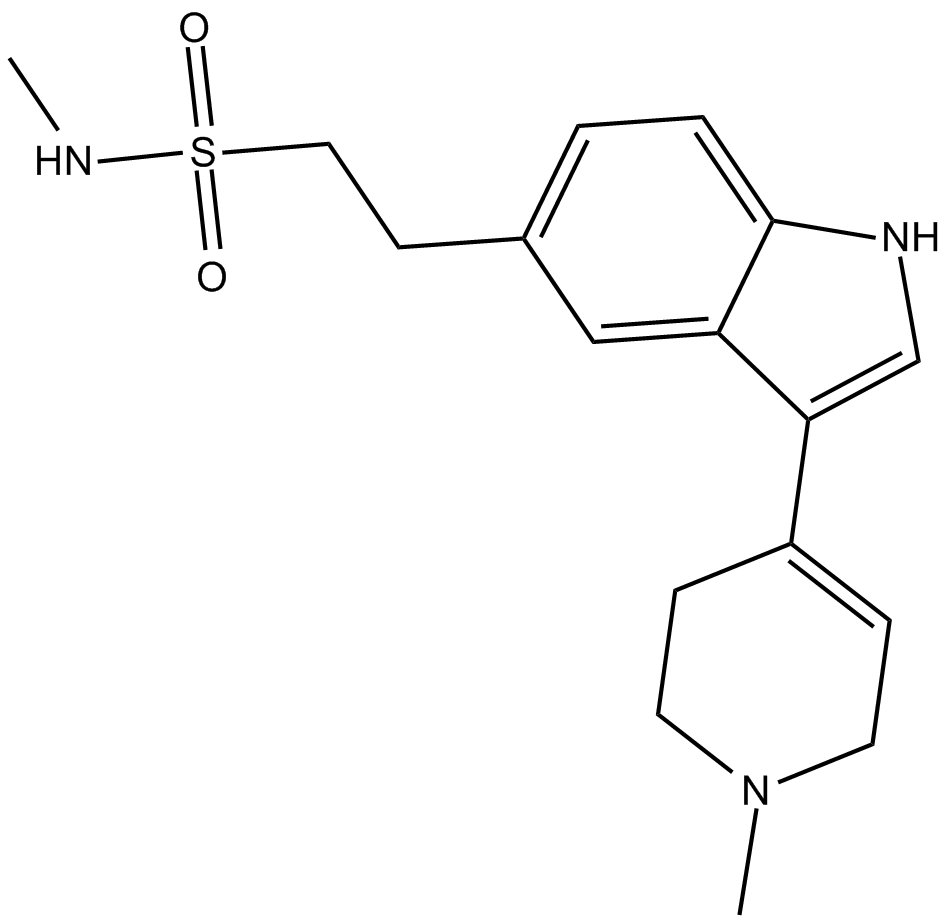 C5582 3,4-dihydro NaratriptanSummary: selective serotonin 5-HT1B agonist
C5582 3,4-dihydro NaratriptanSummary: selective serotonin 5-HT1B agonist -
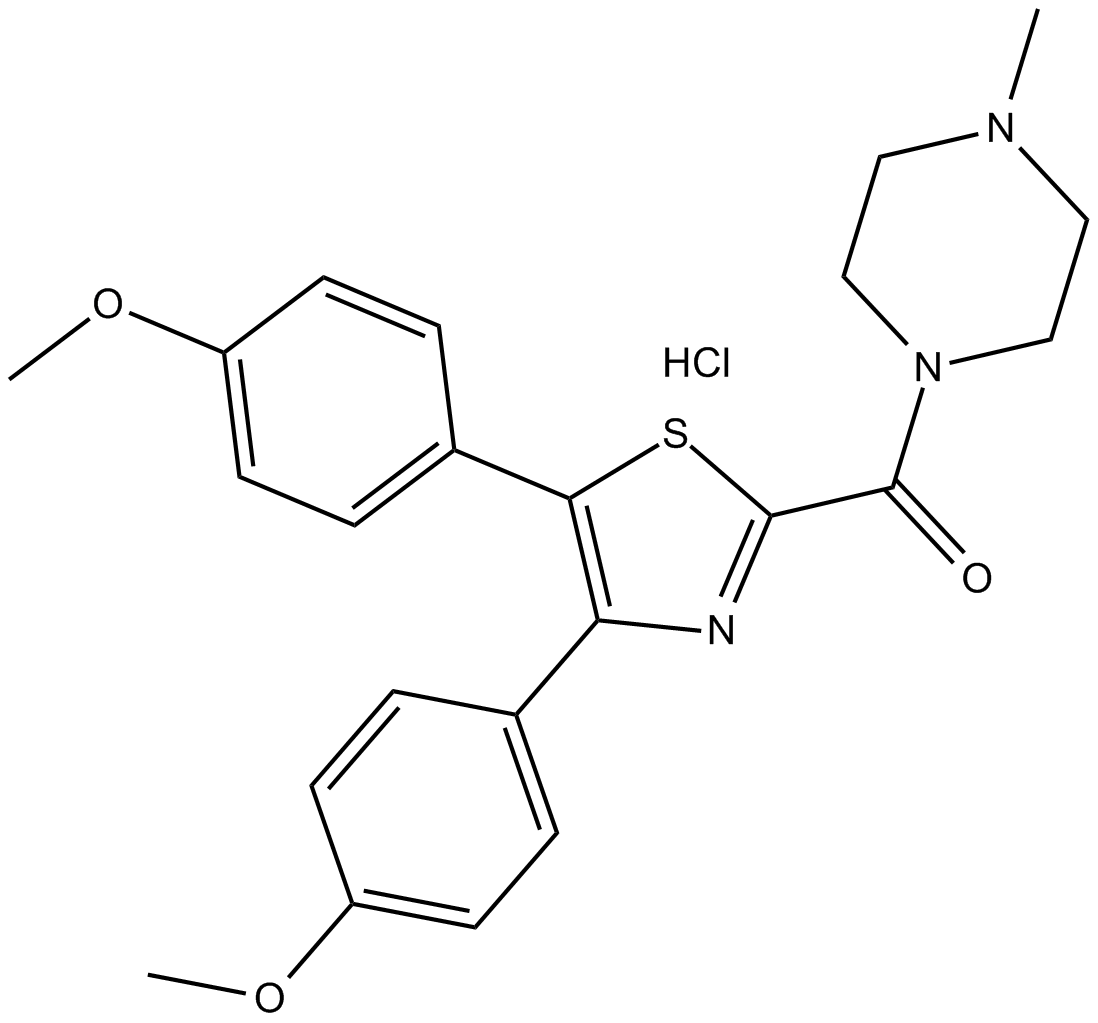 C5551 FR122047 (hydrate)Summary: selective inhibitor of COX-1
C5551 FR122047 (hydrate)Summary: selective inhibitor of COX-1 -
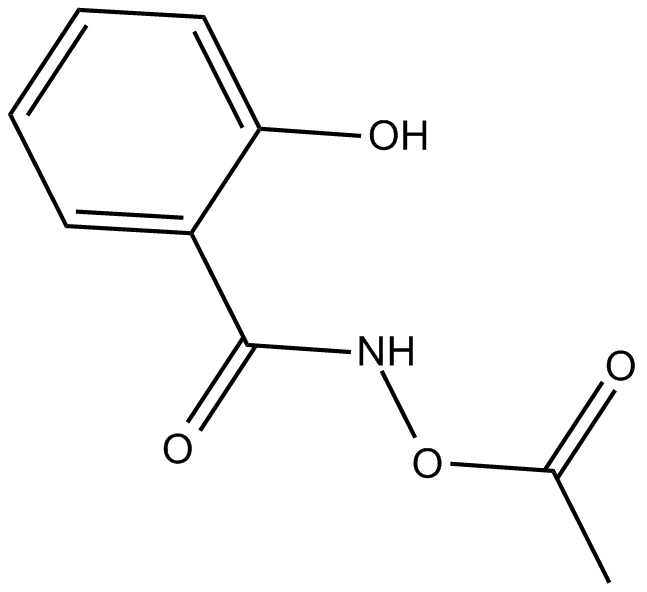 C5581 O-Acetyl Salicylhydroxamic AcidSummary: irreversible, non-selective inhibitor of COX-1 and COX-2
C5581 O-Acetyl Salicylhydroxamic AcidSummary: irreversible, non-selective inhibitor of COX-1 and COX-2 -
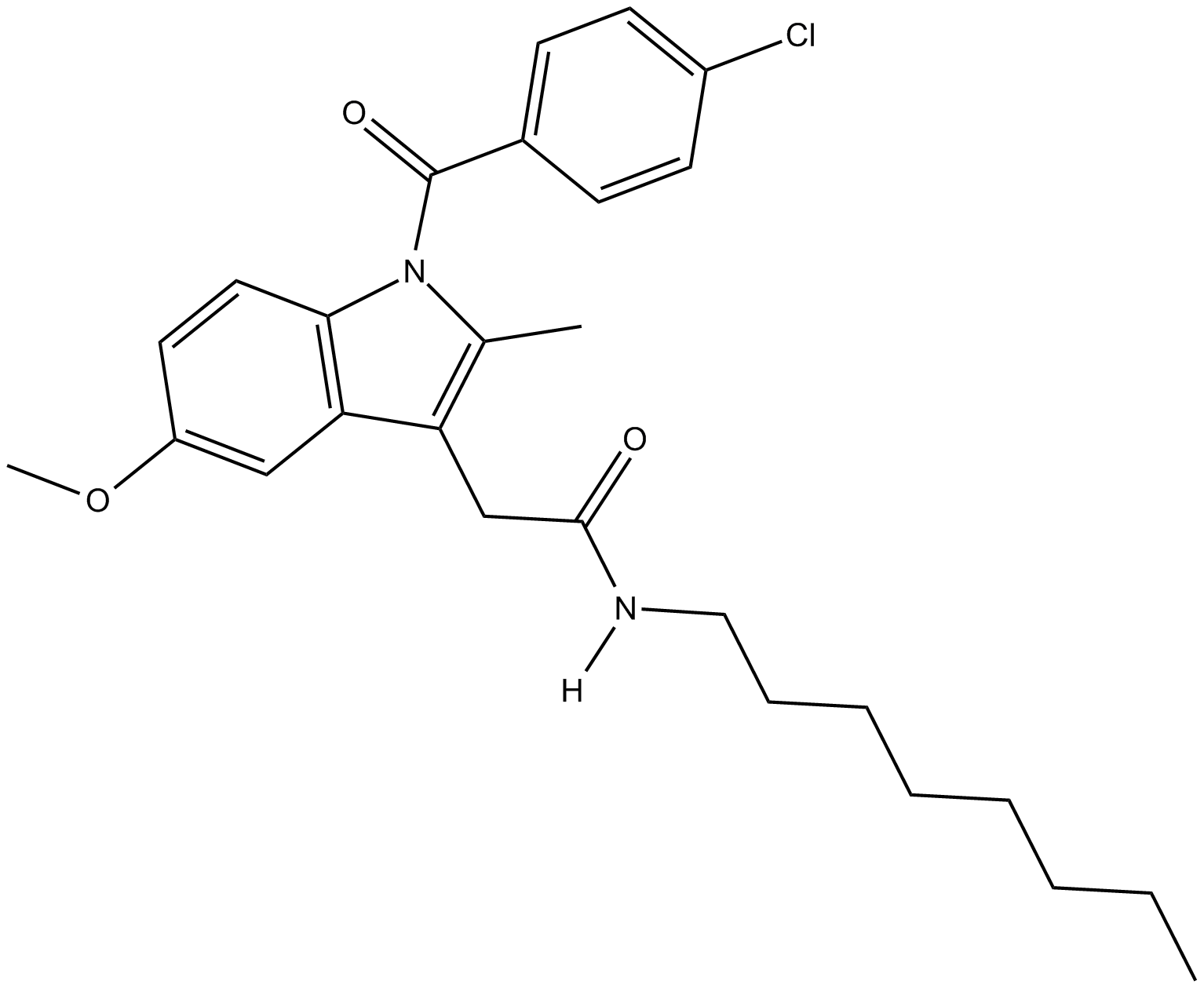 C5591 Indomethacin N-octyl amideSummary: potent but non-selective inhibitor of both COX-1 and COX-2
C5591 Indomethacin N-octyl amideSummary: potent but non-selective inhibitor of both COX-1 and COX-2

